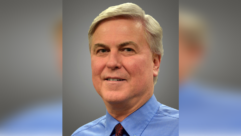The author is membership program director of the National Federation of Community Broadcasters. NFCB commentaries are featured regularly at radioworld.com.
It’s been quite a year for media. Community radio isn’t exempt from the current.
In truth, community radio is operating during an exciting moment. People still depend on radio. It is trusted and relied on every day. Even as audiences are turning elsewhere, commercial and community radio are still working hard to stay relevant. The fretting over the internet that began in radio more than a decade ago is still omnipresent, but even today the medium remains robust. May we finally say radio is here to stay?
Looking at what’s ahead means looking at where community radio, and the whole platform, has been. The end of the year is our chance to take stock of our media space and ourselves. It is also a chance to look back at some of the big stories of 2016.
Challenges
I experienced the year both in the trenches as a program director as well as on the plateaus as someone who serves the wider community radio ecosystem. The big issues impacting community radio this year were many and diverse. Whether it was the launch of the new Emergency Alert System reporting methods and tools or covering the presidential campaign and the myriad debates unpacked from it, community radio faced many challenges. In many cases, community radio rose to the occasion in a grand and inspiring way.
There were many important news stories related to community radio in 2016. A few stand out clearly.
Podcasting continued its moment begun in 2016. Joining public radio stalwarts were a crop of digital-first selections from the traditional public media system. Some of these selections, such as NPR’s Code Switch, were particularly notable because they were forays into becoming more inclusive and diverse. Not to be outdone, community radio got into the podcasting mix, with community radio icon WORT(FM) in Madison, Wis., among the stations offering podcast exclusive programming as well as online versions of analog programs.

The emergence of low-power community outlets gained a bit of mainstream press in the New York Times among other outlets. Pew Research pointed out the meteoric growth in low-power community radio. Less reported in the statistics was the dominance of religious broadcasting in this context. Nevertheless, low-power community radio outlets like WGXC, WXNA, WSFM and WCOM, among scores of others, continued to show their communities how essential local arts, culture and news were for their areas.
However, to me, no bigger story was part of community radio than giving.
Needless to say, the presidential campaign season primed a lot of interest in donating based on values. Giving money to candidates like Bernie Sanders, Ted Cruz, Hillary Clinton or Donald Trump became, in the public discourse, a nod to who you were as a person, the things you believed in, and the kind of country you wanted to see. News reports indicated money for campaigns in large and small amounts poured in during the primaries and beyond. For the Obama generation, brought up with social media in politics, 2016 was an engaged year. A financial contribution for many Americans was an expression of commitment.
The heated political period criss-crossed a change in corporate culture. During the Obama years, more large multinational businesses than ever have adopted progressive ideas and policies aimed at social responsibility. Philanthropy today is becoming ingrained more and more as part of the mainstream culture as a result. From the massive stages at Dreamforce to your local nonprofit, everyday Americans got a greater understanding of how giving back makes a difference in the lives of neighbors and on matters cities and towns care about.
We at the National Federation of Community Broadcasters will tap into this energy Dec. 29–30, when nearly 50 community radio stations unite for GiveBig to MyStation, However, people’s interest in giving back isn’t isolated to the end of the year. After the election, many community radio and noncommercial media organizations said they’d seen a spike in donations. Americans coast to coast clearly saw the vital check on democracy that public-service media could be during the Trump administration.
To be clear, community radio still faces uphill battles. For all the low-power community radio successes, many outlets are struggling to sustain themselves. Aging audiences and involving new generations of leadership remain consistent problems for community radio. However, 2016 was a hopeful year. While much is up in the air in 2017, community radio is sure to stay bold.











